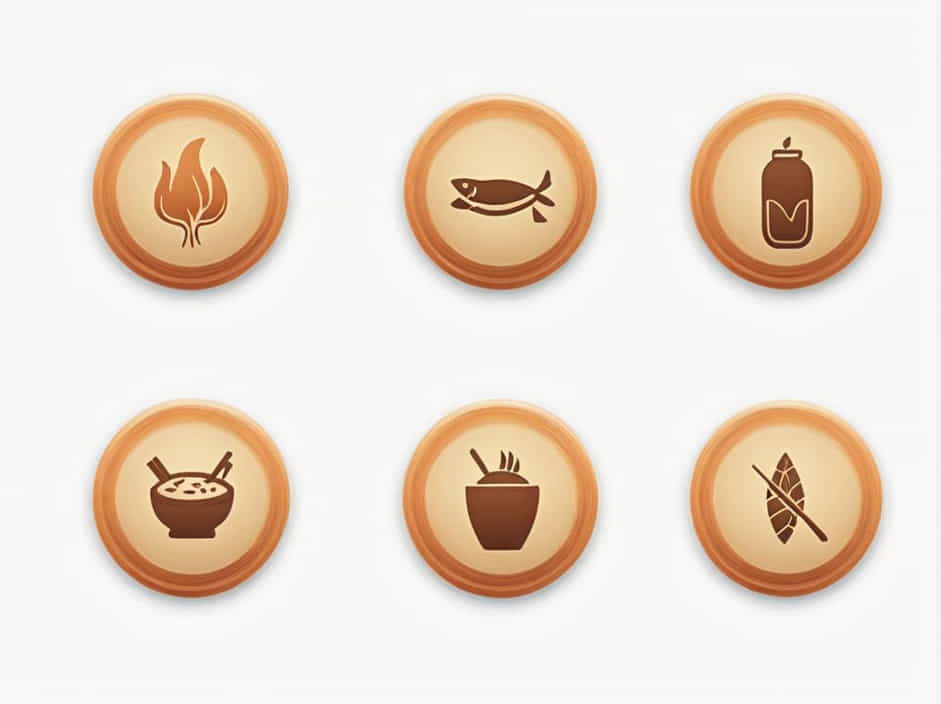The Kwakiutl tribe, also known as the Kwakwaka’wakw people, are indigenous to the Pacific Northwest Coast of North America, primarily in present-day British Columbia, Canada. Living in a region rich in natural resources, the Kwakiutl developed a diverse and nutrient-rich diet centered around fishing, hunting, and gathering.
In this topic, we will explore the traditional foods of the Kwakiutl tribe, how they harvested and prepared their meals, and the cultural significance of food in their society.
1. The Importance of Seafood in the Kwakiutl Diet
1.1. Salmon: The Staple Food
One of the most important food sources for the Kwakiutl was salmon. The tribe relied heavily on the annual salmon runs, which provided them with an abundant food supply. They used various methods to catch salmon, including:
- Weirs and traps to direct fish into enclosures.
- Spears and harpoons for individual catches.
- Nets made from plant fibers to catch large numbers at once.
Preserving Salmon
To ensure food availability year-round, the Kwakiutl preserved salmon by:
- Drying: Slicing the fish into strips and drying them over a wooden rack.
- Smoking: Using cedar wood smoke to enhance flavor and prevent spoilage.
- Fermenting: Allowing salmon to ferment in wooden containers for later use.
1.2. Other Fish and Shellfish
Besides salmon, the Kwakiutl ate a variety of other seafood, including:
- Halibut – A large fish that was often roasted or boiled.
- Herring – Consumed fresh or dried for storage.
- Cod – Caught using bone hooks and wooden lines.
- Eulachon (Candlefish) – A small fish high in oil, used to make nutritious grease.
- Crabs, clams, mussels, and oysters – Gathered from coastal waters and often roasted over an open fire.
2. Hunting: Land Animals in the Kwakiutl Diet
2.1. Mammals for Meat
While seafood was the primary food source, the Kwakiutl also hunted land animals such as:
- Deer – Hunted with bows and arrows and often roasted over an open fire.
- Elk – A larger game animal that provided both meat and hides.
- Bears – Occasionally hunted for meat, fat, and fur.
- Beavers – Valued for their meat and pelts.
2.2. Seals and Sea Lions
The Kwakiutl were skilled hunters of seals and sea lions, using:
- Harpoons made from bone or antlers.
- Canoes for hunting trips along the coastline.
Seal meat was often boiled or roasted, and their fat was rendered into oil, which was used for cooking and trading.
3. Plant-Based Foods and Foraging
3.1. Roots, Berries, and Edible Plants
Though the Kwakiutl relied mainly on seafood and meat, they also gathered a variety of wild plants to supplement their diet. Some of the most common plant foods included:
- Camas root – Cooked in underground earth ovens for a sweet, starchy dish.
- Fiddlehead ferns – Young fern shoots eaten raw or steamed.
- Berries – Including salmonberries, huckleberries, and elderberries, which were eaten fresh or dried.
- Seaweed – Harvested from the ocean and dried for soups and seasoning.
3.2. Nuts and Seeds
The Kwakiutl also gathered nuts and seeds for nutrition, including:
- Acorns – Ground into flour for baking.
- Pine nuts – High in protein and eaten raw or roasted.
4. Cooking and Food Preparation
The Kwakiutl used traditional cooking techniques to prepare their meals, including:
4.1. Roasting Over an Open Fire
Many foods, including fish, meat, and shellfish, were simply roasted over an open flame, which preserved natural flavors.
4.2. Stone Boiling
A common method for cooking soups and stews involved:
- Heating stones in a fire.
- Dropping the hot stones into a wooden or cedar-bark container filled with water.
- Adding fish, meat, or plants to cook in the boiling water.
4.3. Smoking and Drying
To preserve food for winter, the Kwakiutl smoked or dried:
- Salmon and other fish.
- Deer and elk meat (similar to modern-day jerky).
5. The Cultural Significance of Food
5.1. Feasting and Potlatch Ceremonies
Food played a major role in Kwakiutl social life, especially in potlatches, which were large gatherings where food was shared in great abundance. Potlatches were held for:
- Celebrations (weddings, births, and new chiefs).
- Honoring ancestors.
- Displaying wealth and generosity.
5.2. Food as a Connection to Nature
The Kwakiutl people believed in respecting nature and only took what they needed. They followed sustainable fishing and hunting practices to ensure that resources were available for future generations.
The Kwakiutl diet was rich in seafood, wild game, and plant-based foods, reflecting their deep connection to the Pacific Northwest environment. Through hunting, fishing, and gathering, they created a well-balanced diet that sustained their communities for generations.
Their food traditions were not just about survival—they were a core part of their culture, social life, and spiritual beliefs. Today, the Kwakiutl people continue to honor their traditional food heritage, preserving their ancestral knowledge for future generations.
